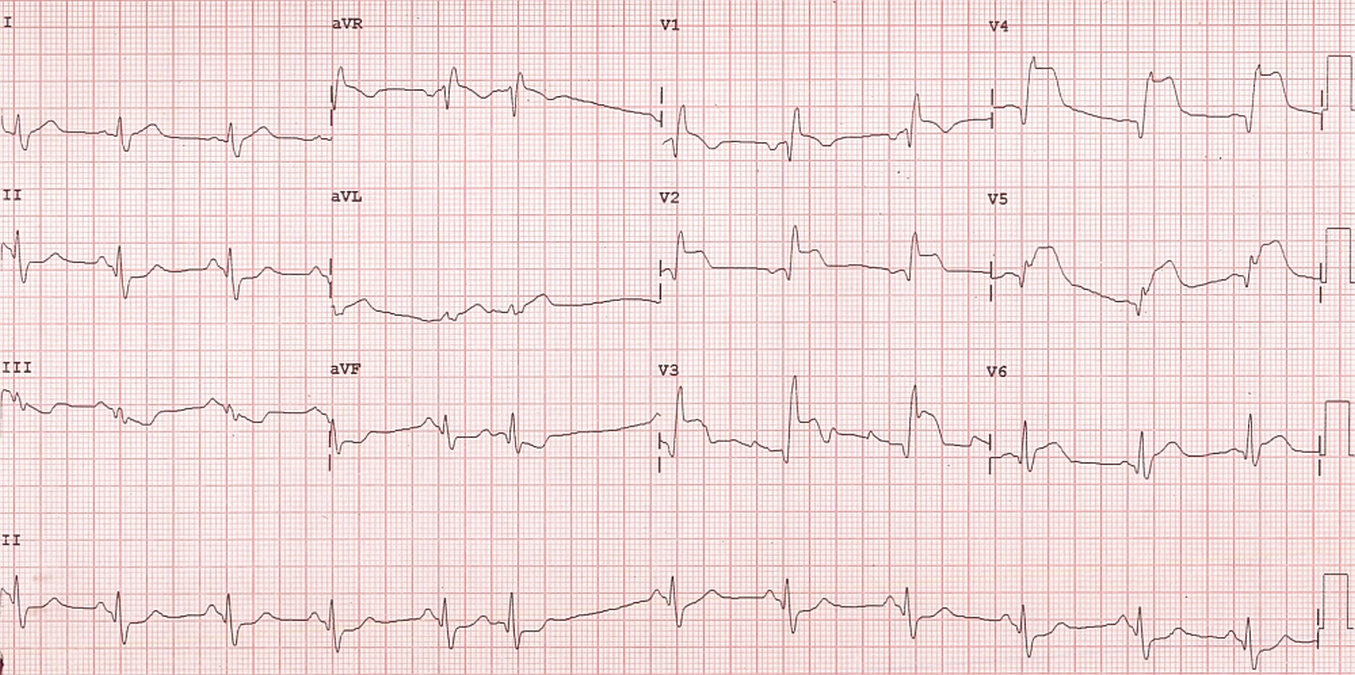Acute anterior wall myocardial infarction with RBBB
Acute anterior wall myocardial infarction with RBBB

Anterior wall myocardial infarction – acute, with right bundle branch block (RBBB). Gross ST segment elevation is seen in anterior leads, with maximum of 0.7 mV elevation in V4. QR pattern in V1 suggests anterior wall infarction with right bundle branch block.
RBBB with an initial Q due to anterior wall infarction is called QRBBB and indicates proximal occlusion of left anterior descending coronary artery. Presence of QRBBB is associated with more extensive myocardial infarction and higher mortality [1, 2].
Negative P waves in V1 indicate left atrial overload, as a result of extensive myocardial infarction and left ventricular dysfunction. ST segment depression seen in inferior leads could be either reciprocal change or ischemia at a distance, which can be clarified only after coronary angiography to document whether the right coronary artery is involved or not.
There is a supraventricular ectopic beat seen in the augmented limb leads (aVR, aVL, aVF) and the corresponding segment of the rhythm strip. This beat has a P wave with different morphology, is premature and is followed by a pause. The fact that this beat has been captured only in this set of leads suggest that all the leads were not acquired simultaneously (i.e, not a simultaneous 12 lead ECG). Three leads and a rhythm lead are being acquired at each instant.
Reference
- Vikas Mishra, Santosh Kumar Sinha, Mahmadulla Razi. Right Bundle Branch Block: A Masquerader in Acute Coronary Syndrome. N Am J Med Sci. 2016 Feb;8(2):121-2.
- Cheuk-Kit Wong, Ralph A H Stewart, Wanzhen Gao, John K French, Christopher Raffel, Harvey D White. Prognostic differences between different types of bundle branch block during the early phase of acute myocardial infarction: insights from the Hirulog and Early Reperfusion or Occlusion (HERO)-2 trial. Eur Heart J. 2006 Jan;27(1):21-8.